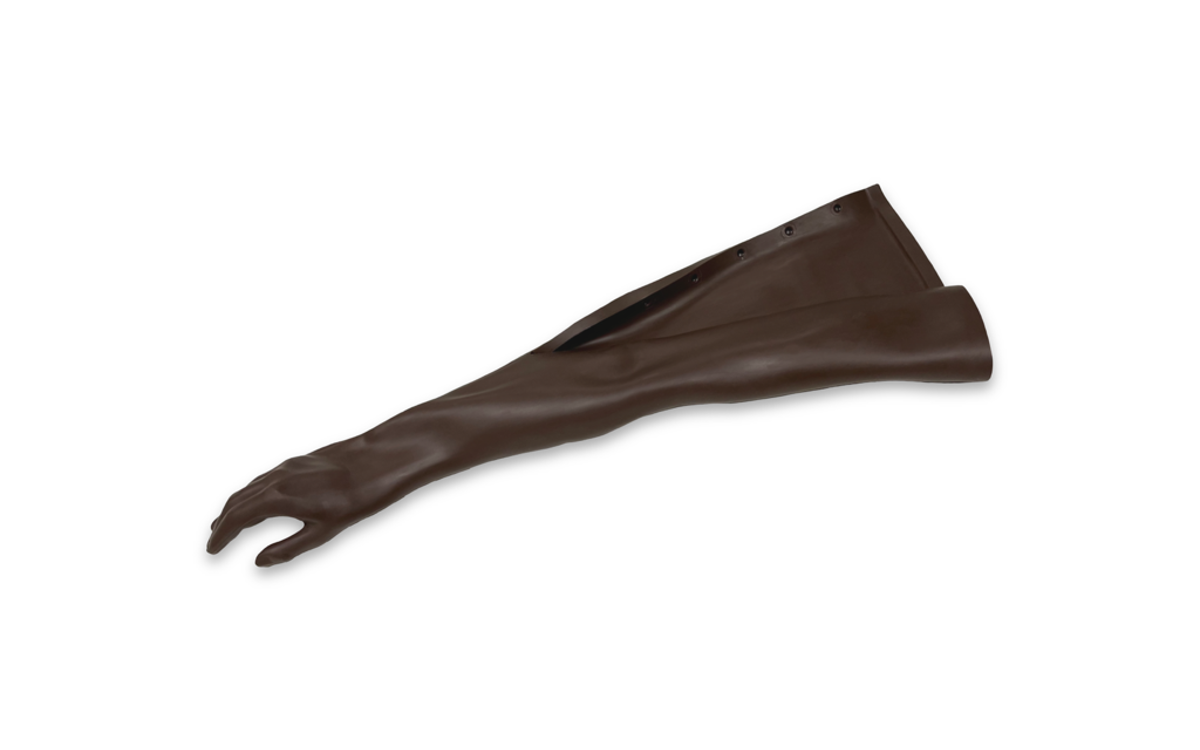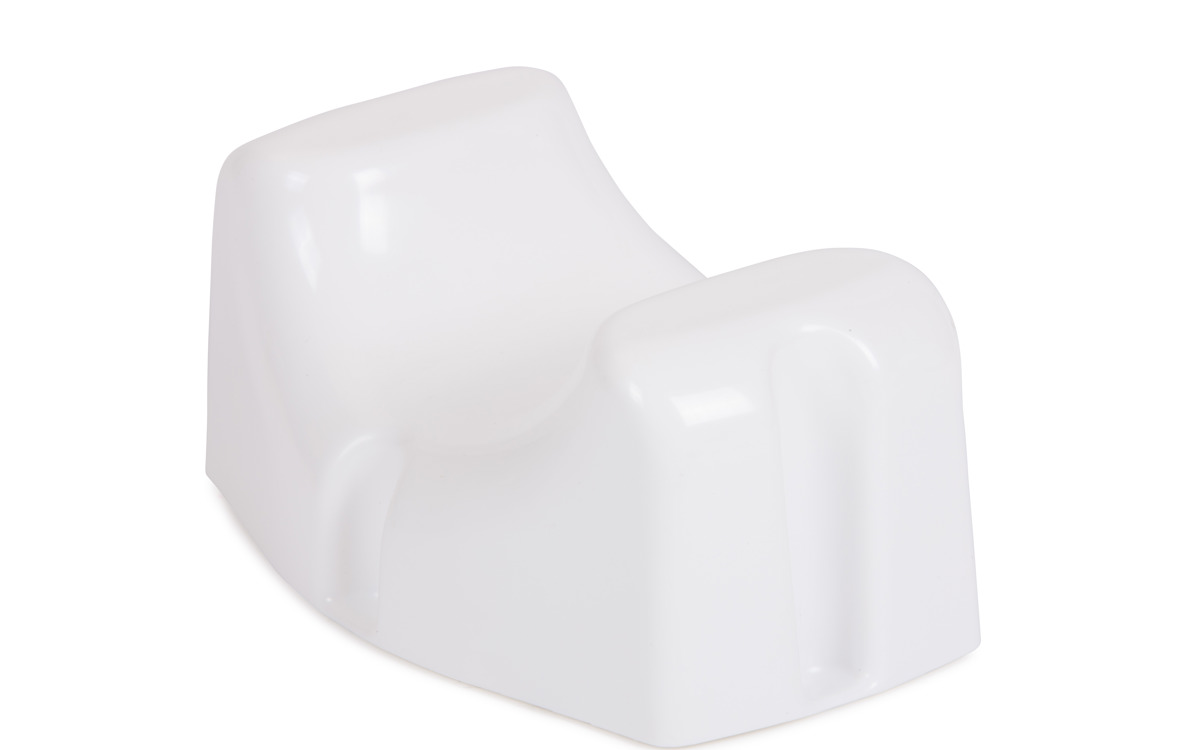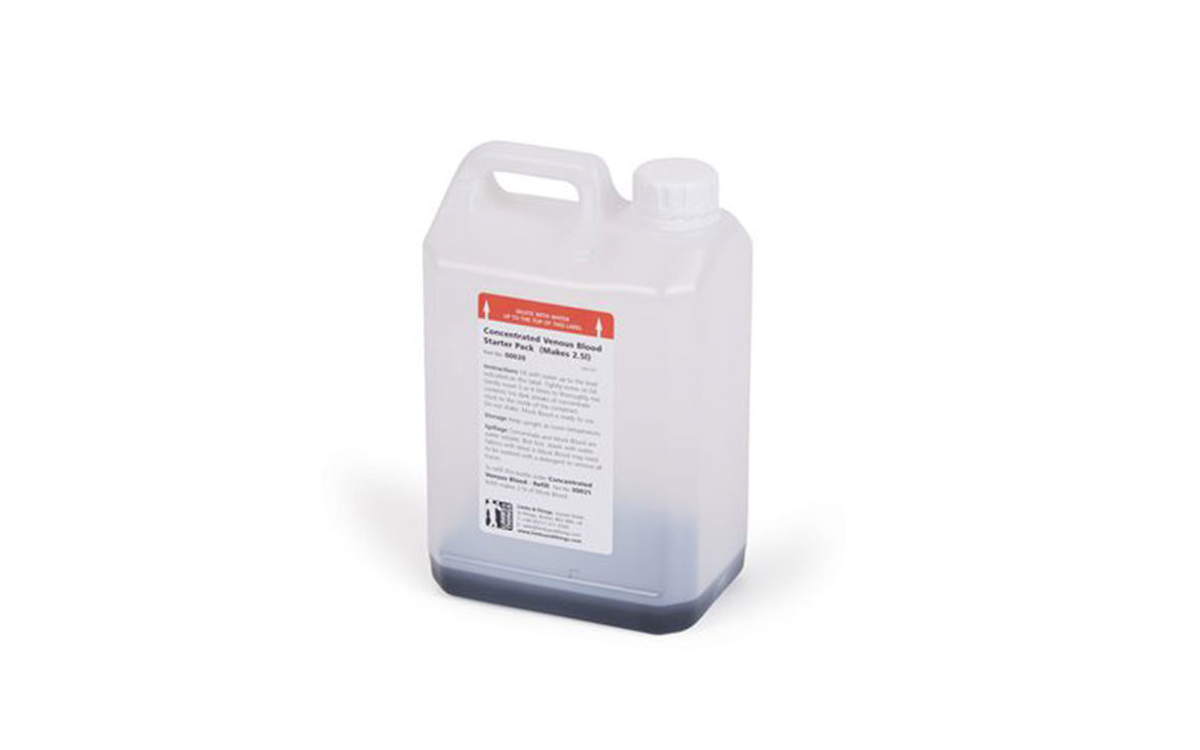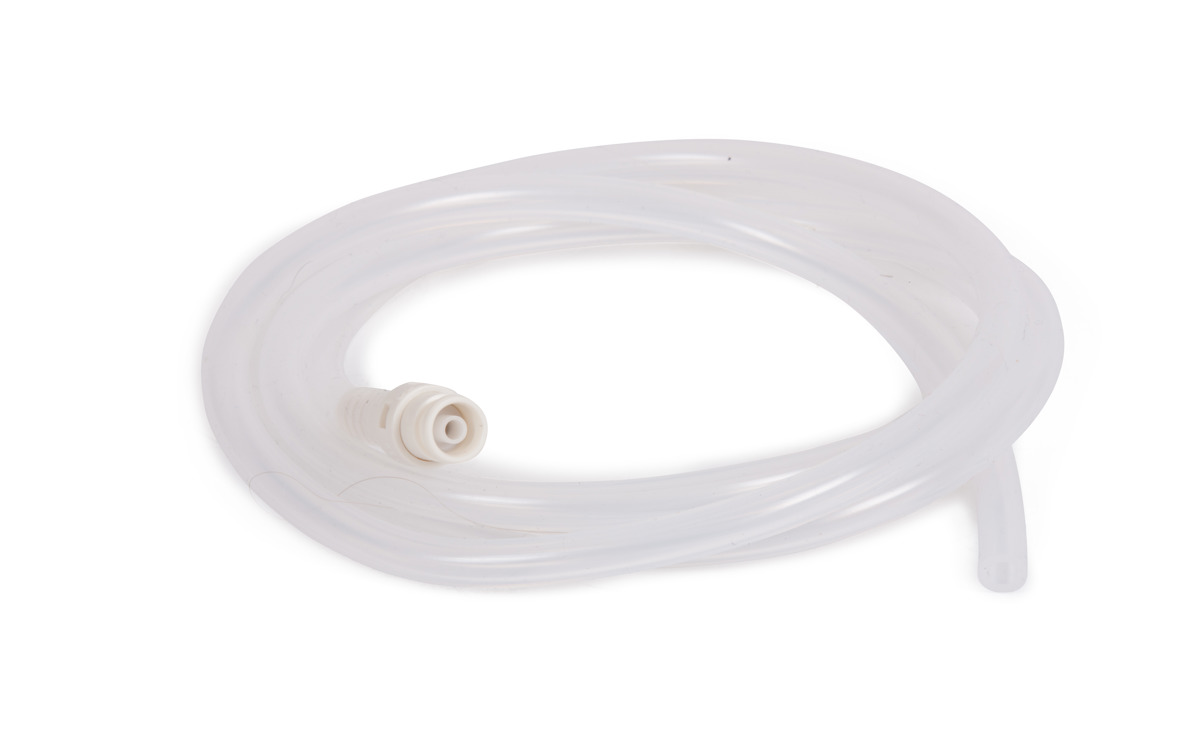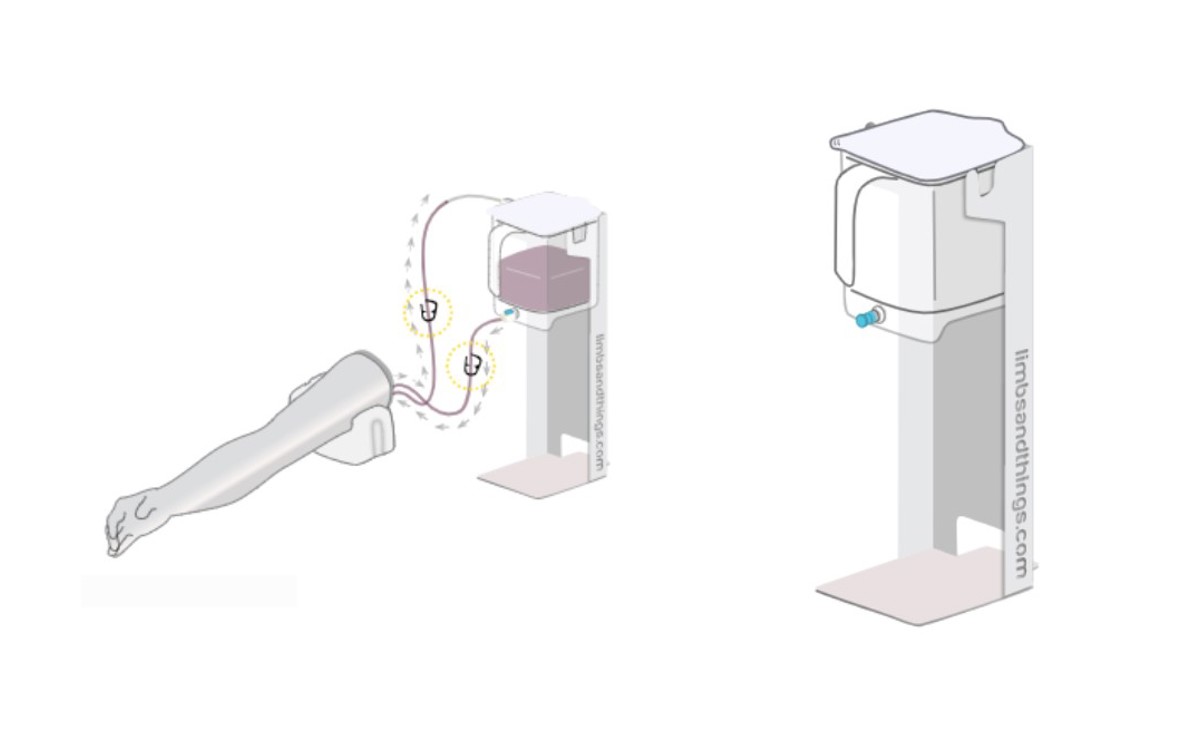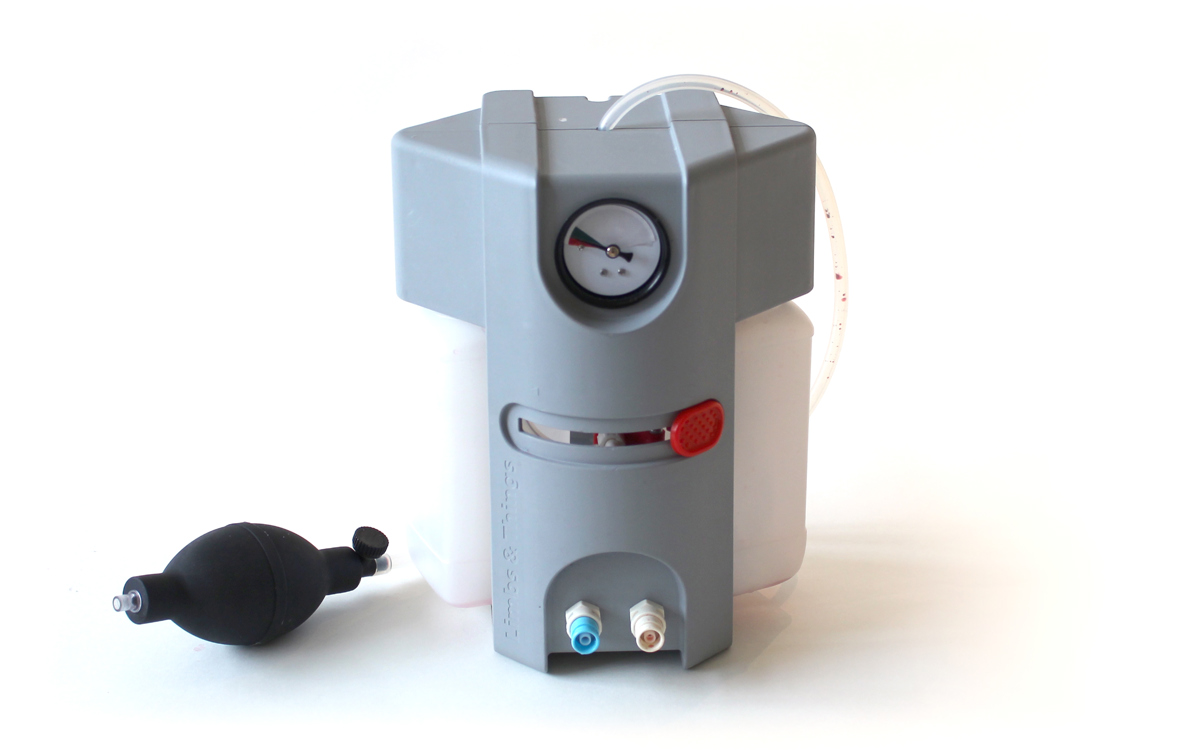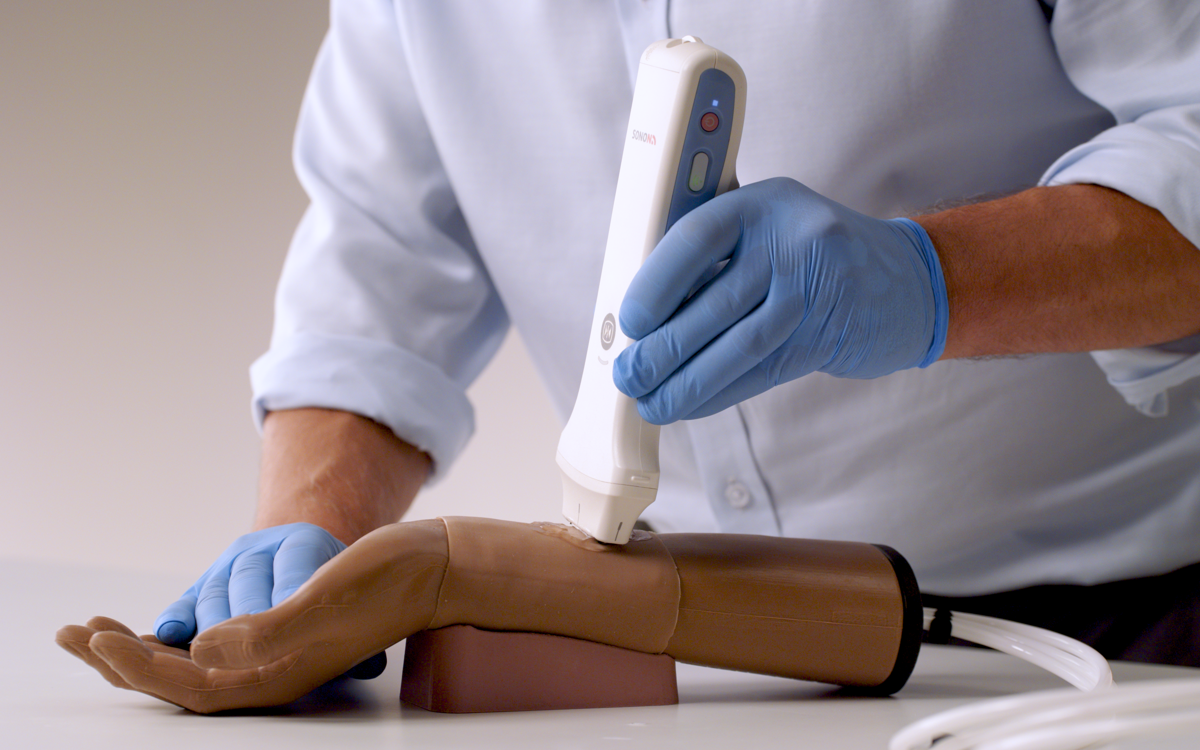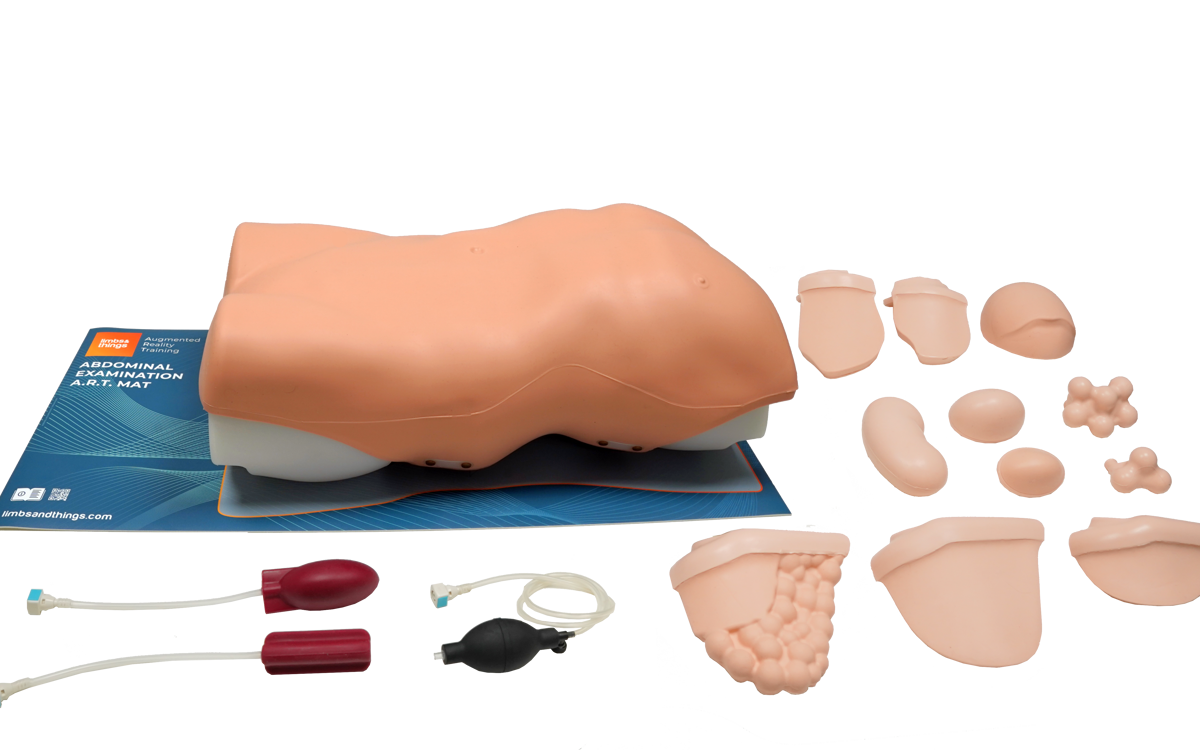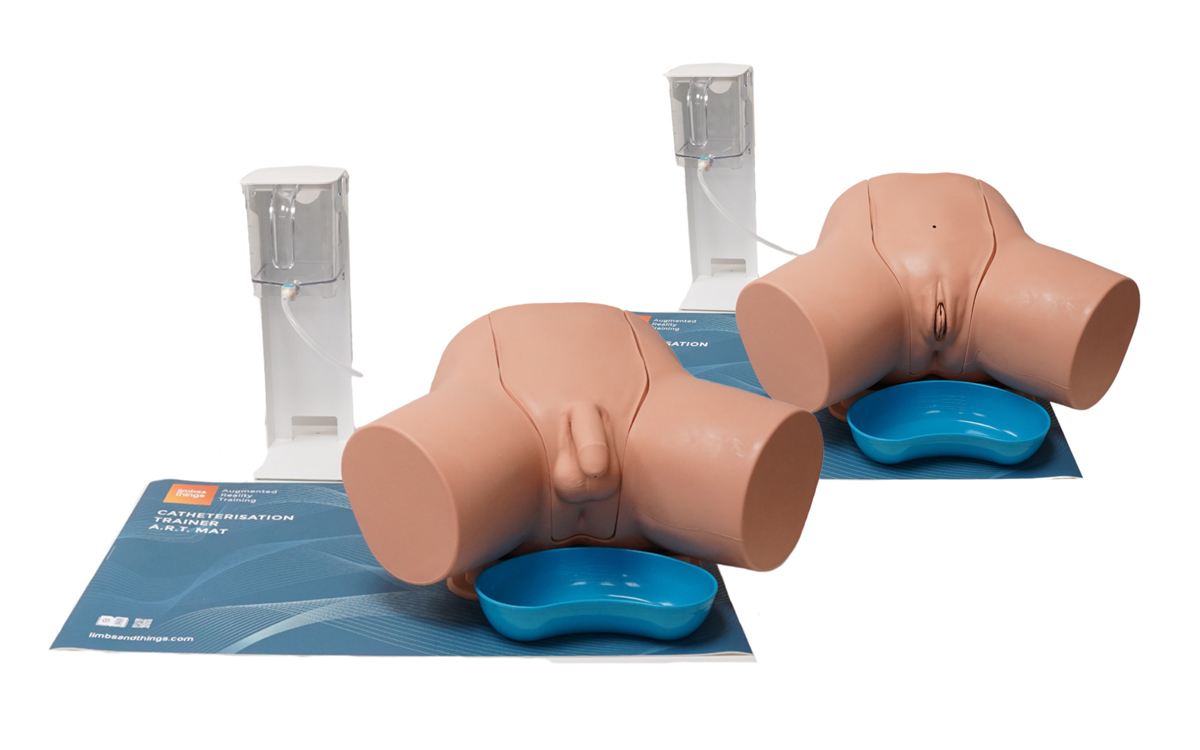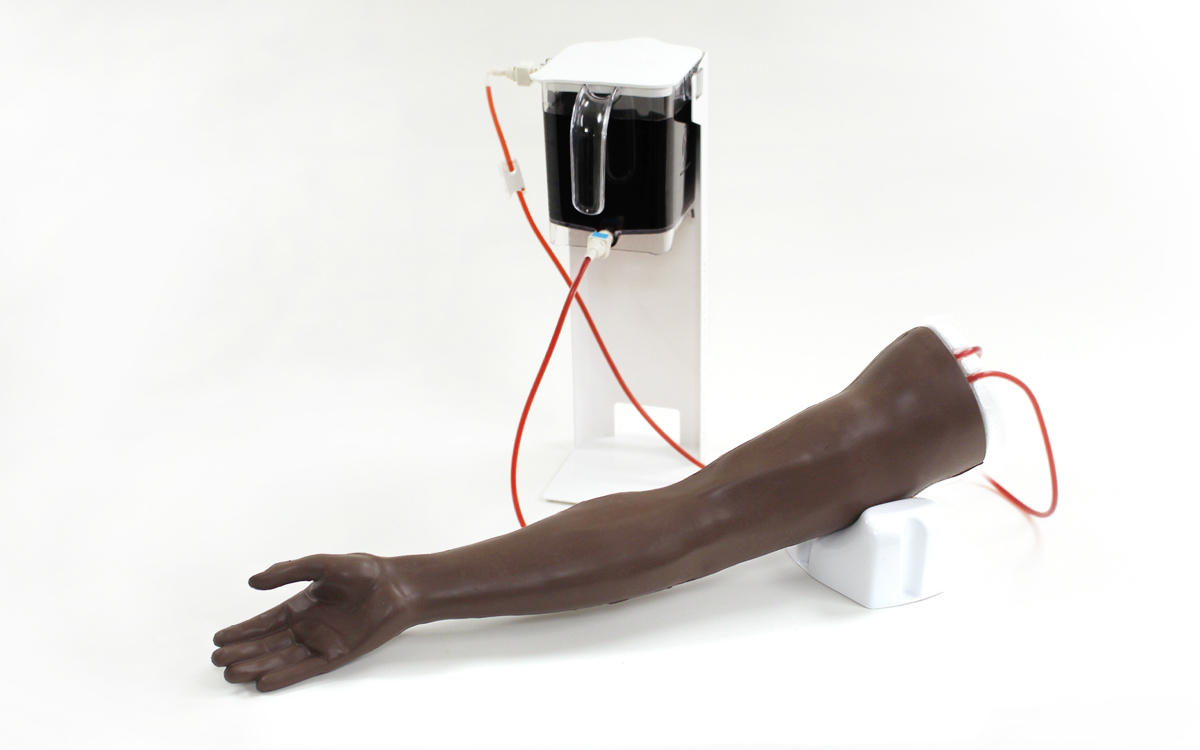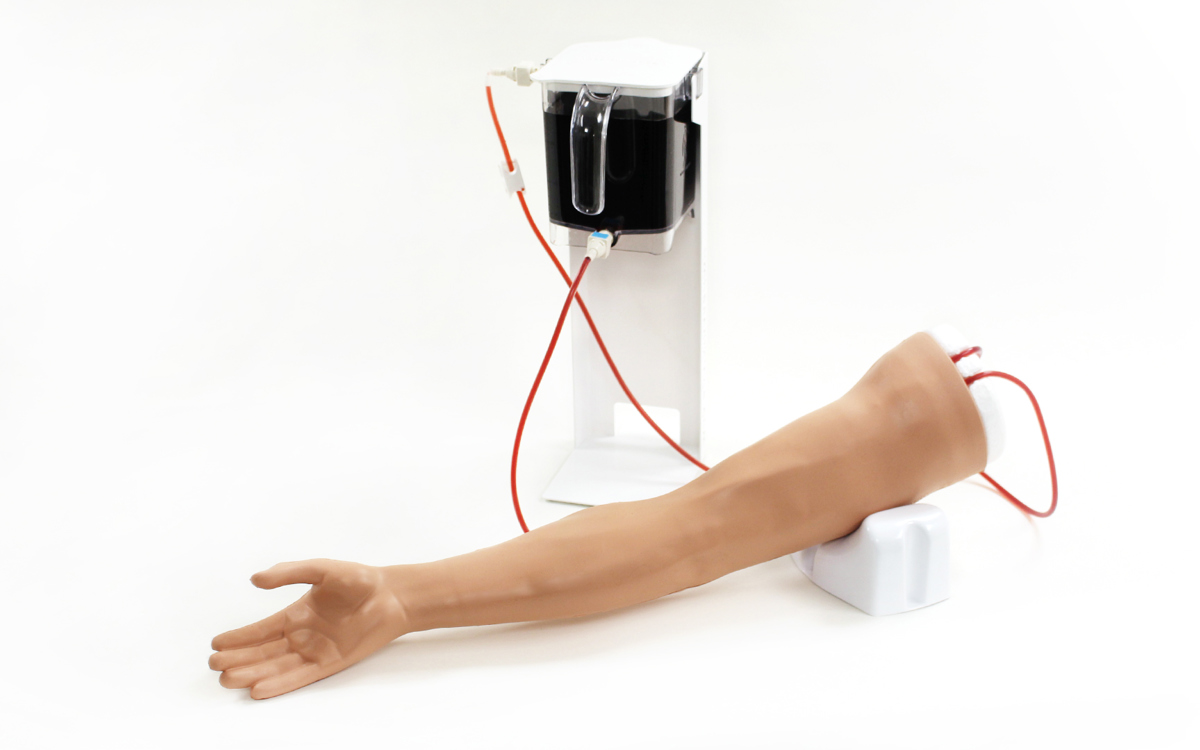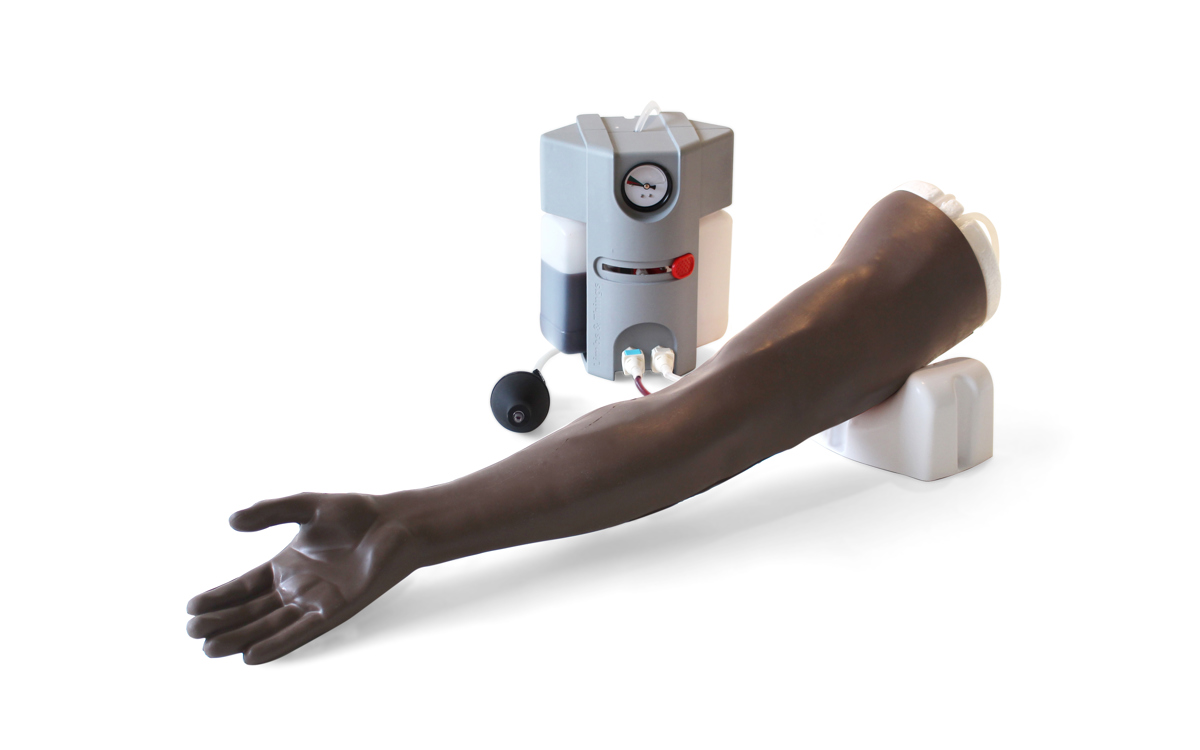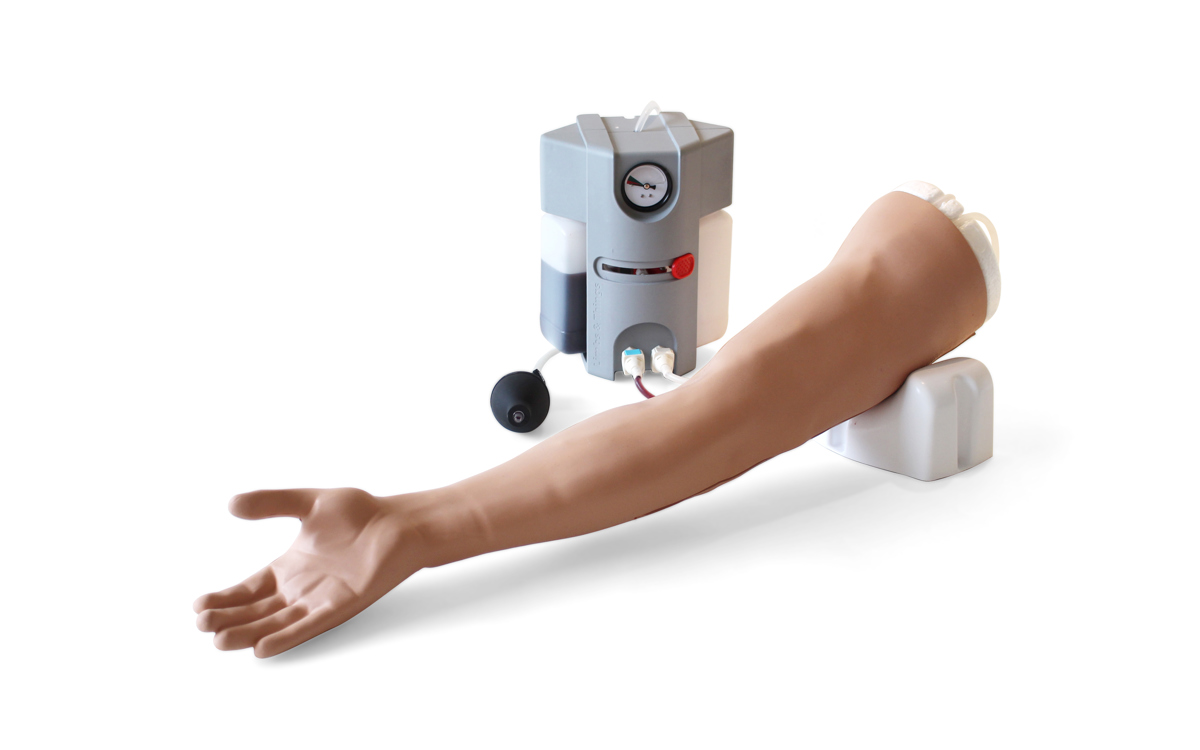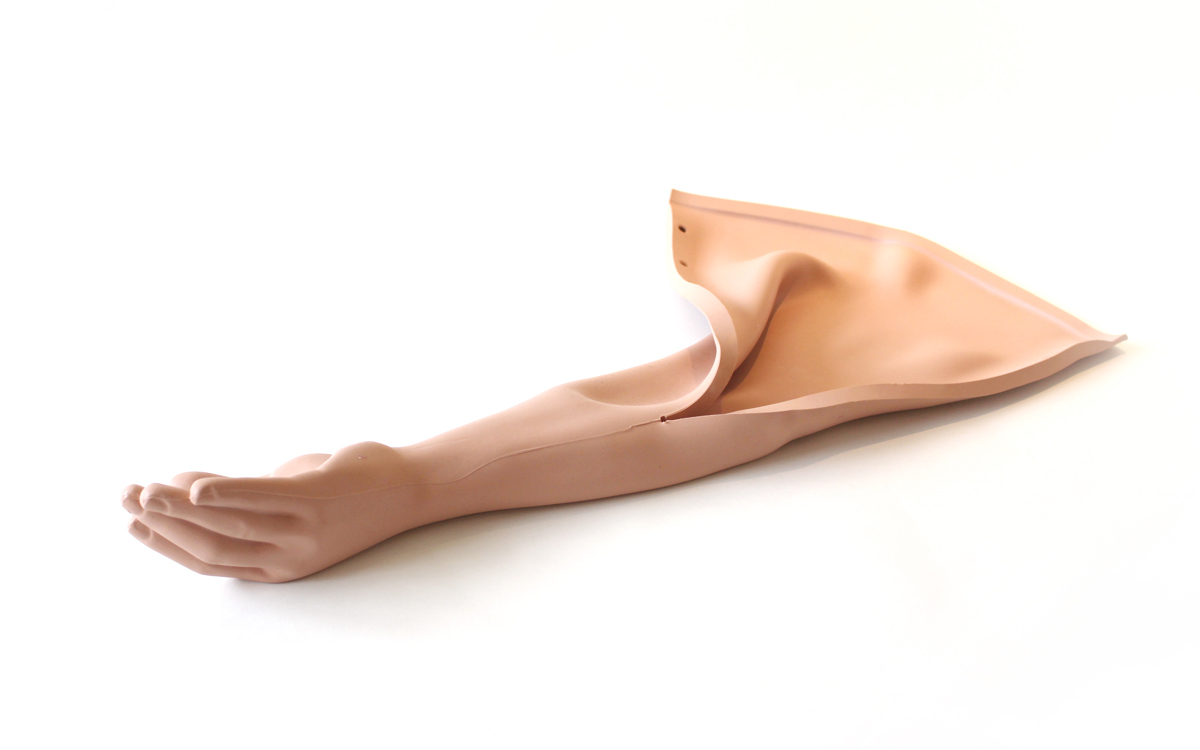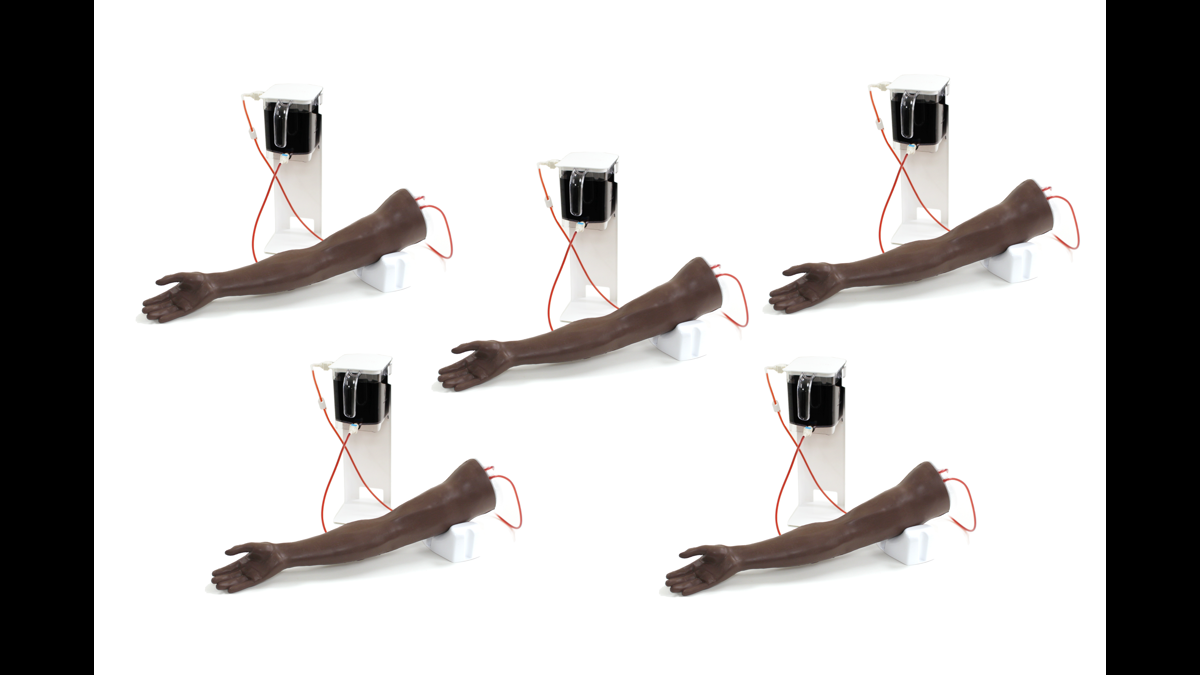
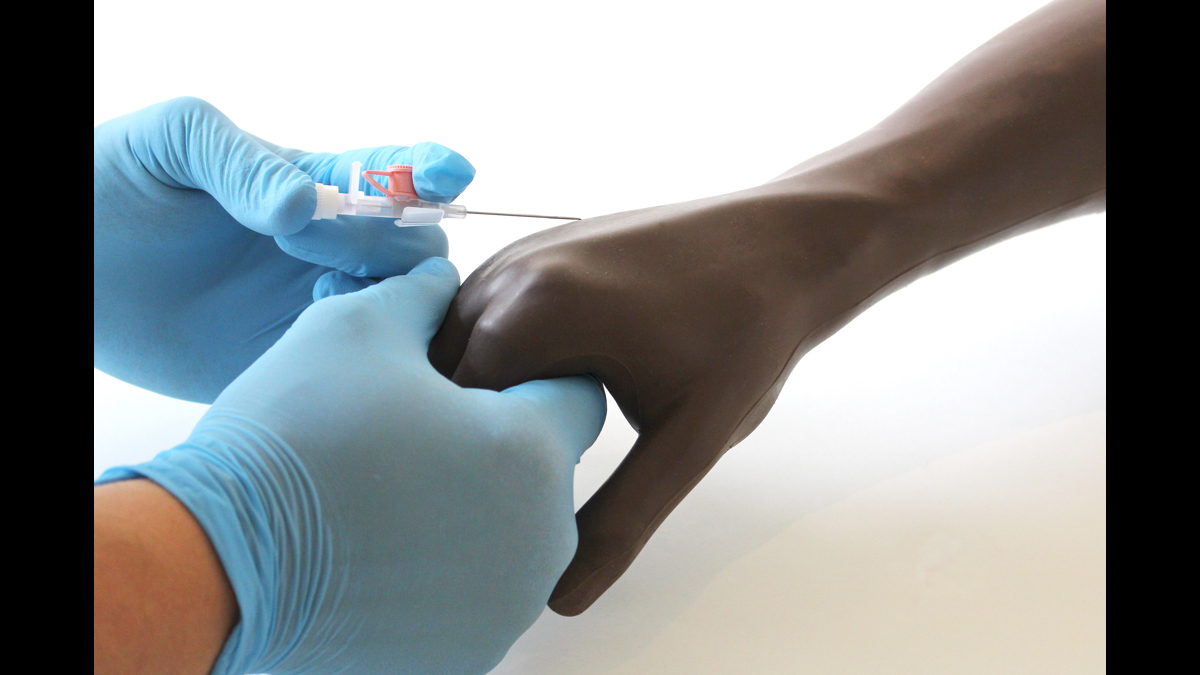
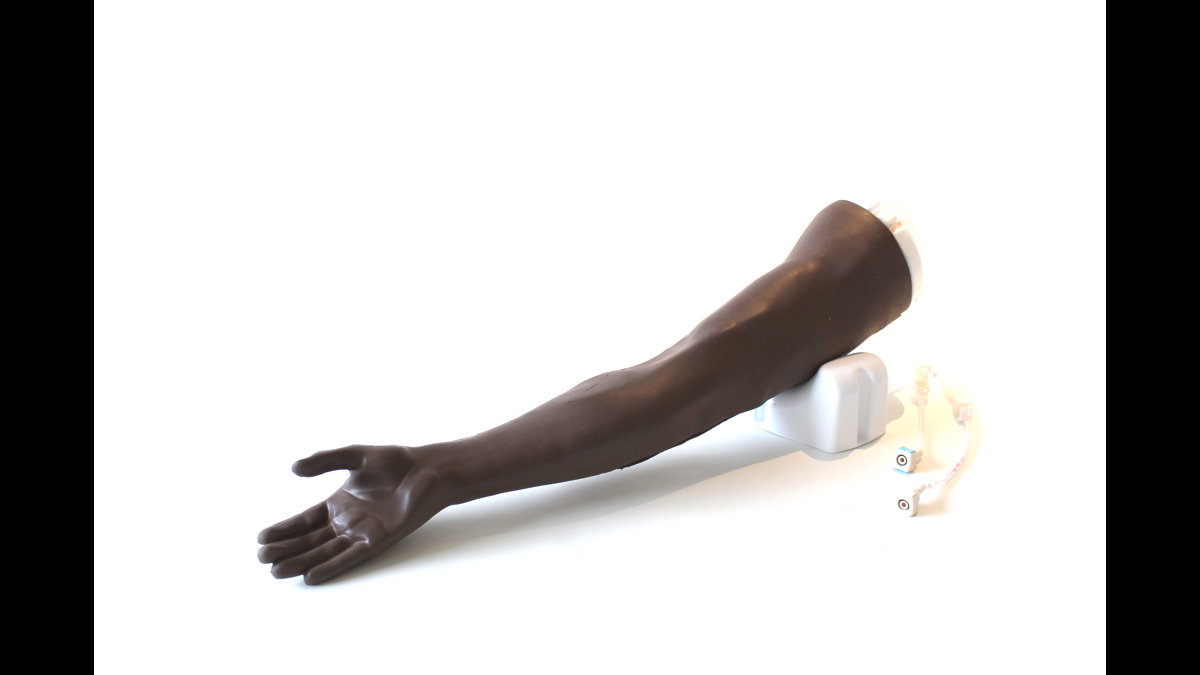
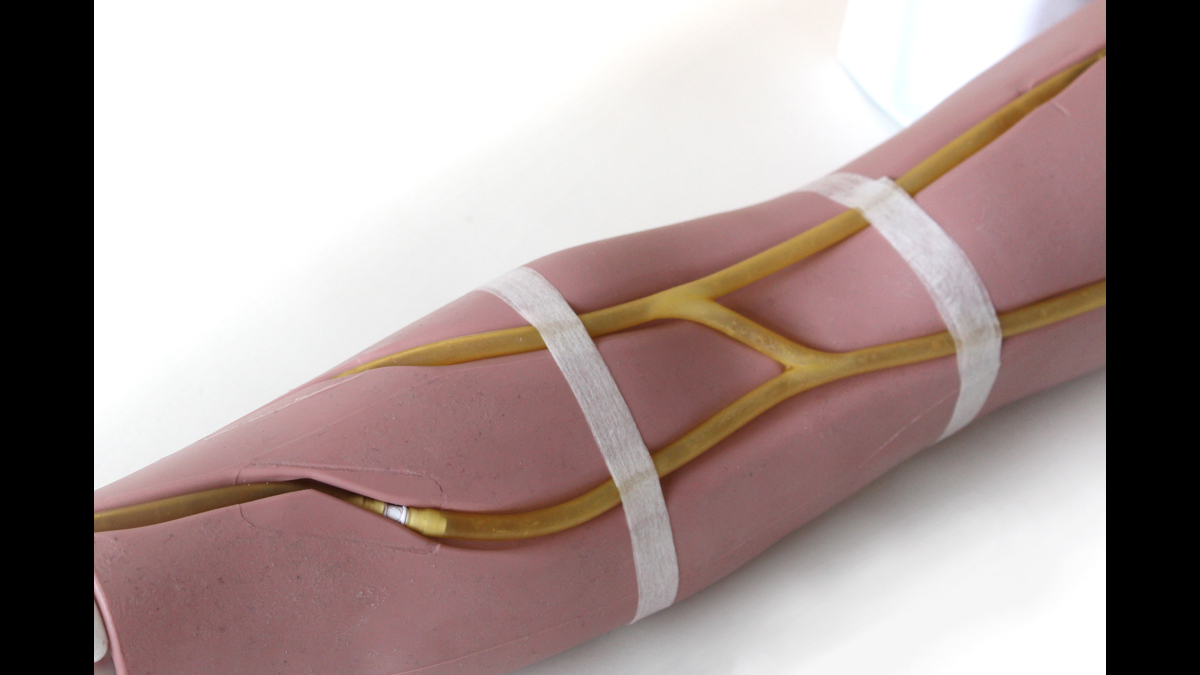
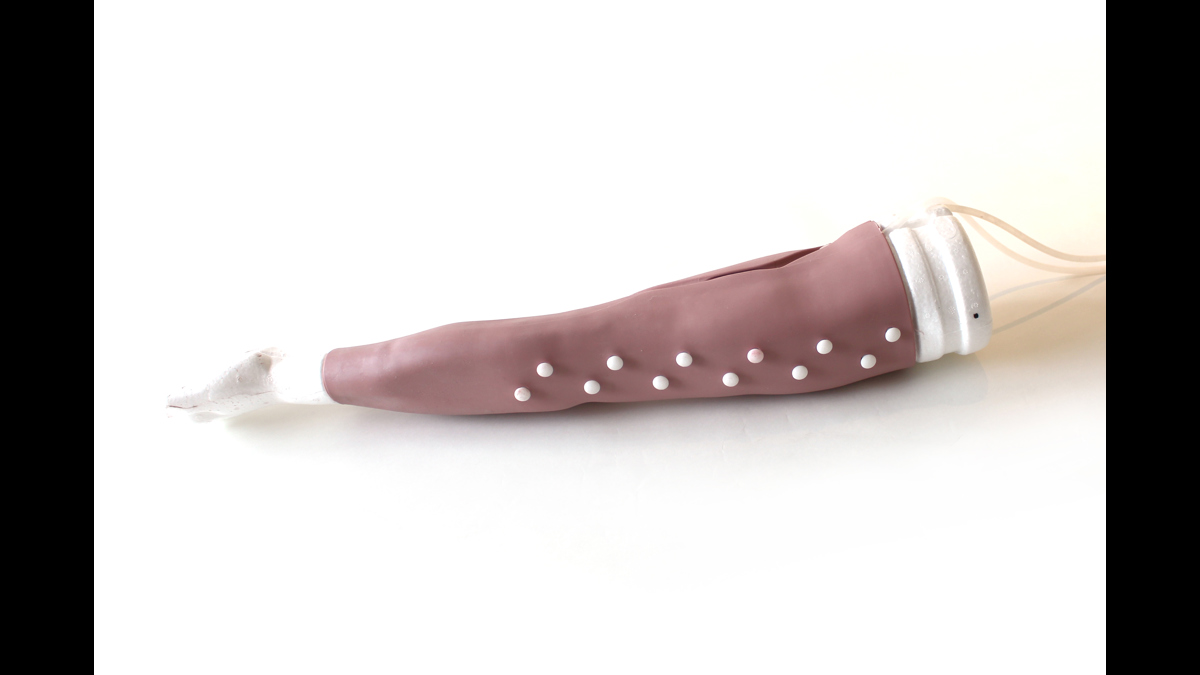
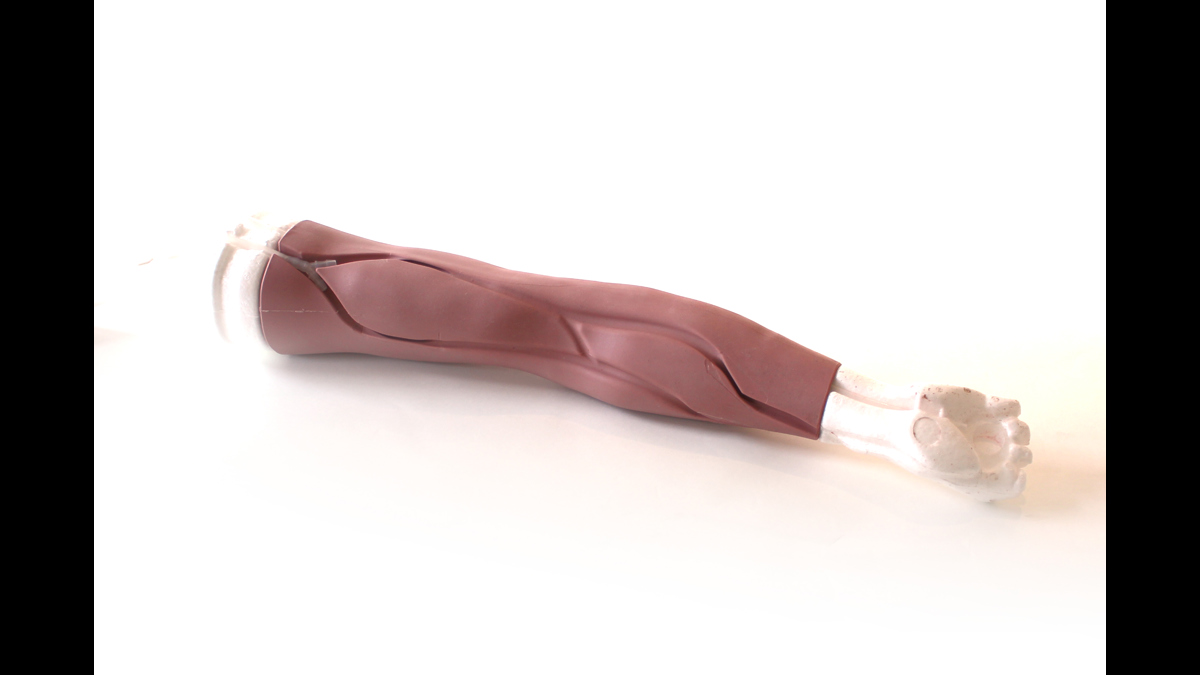
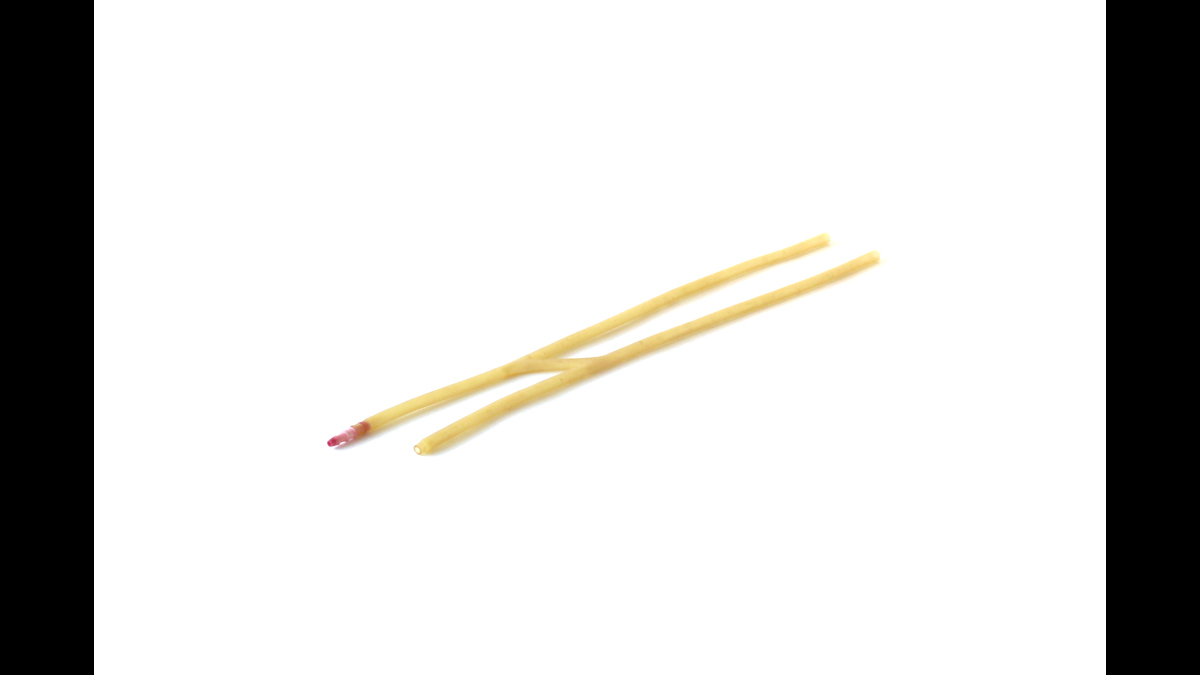
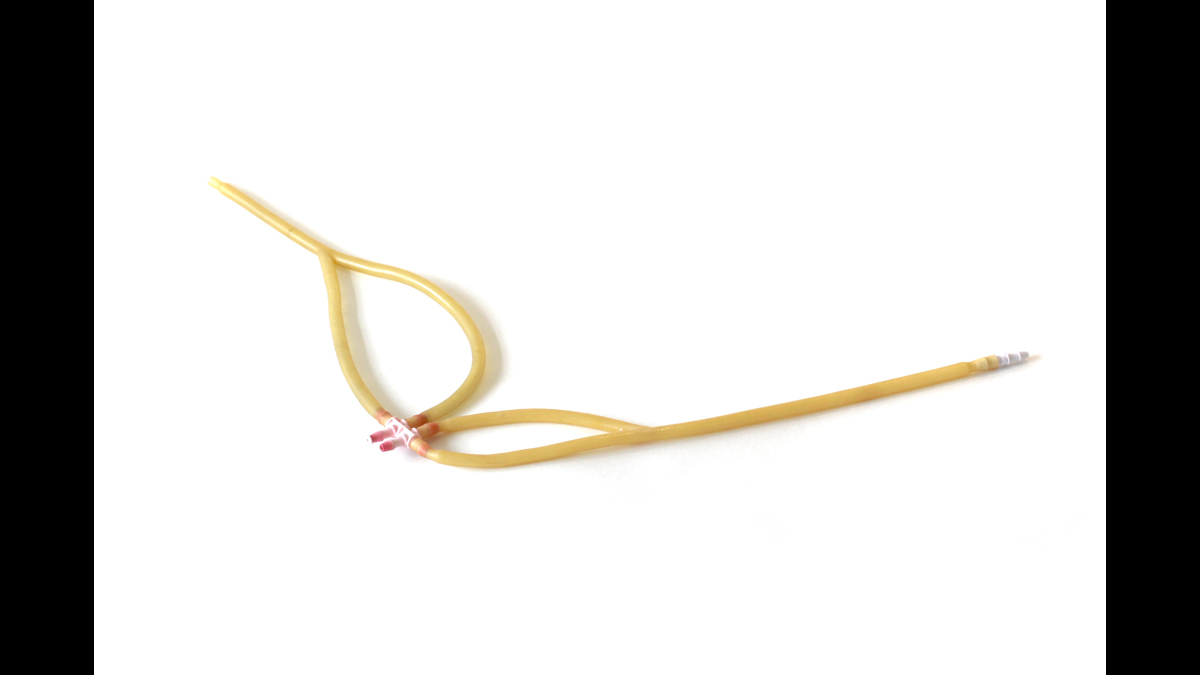
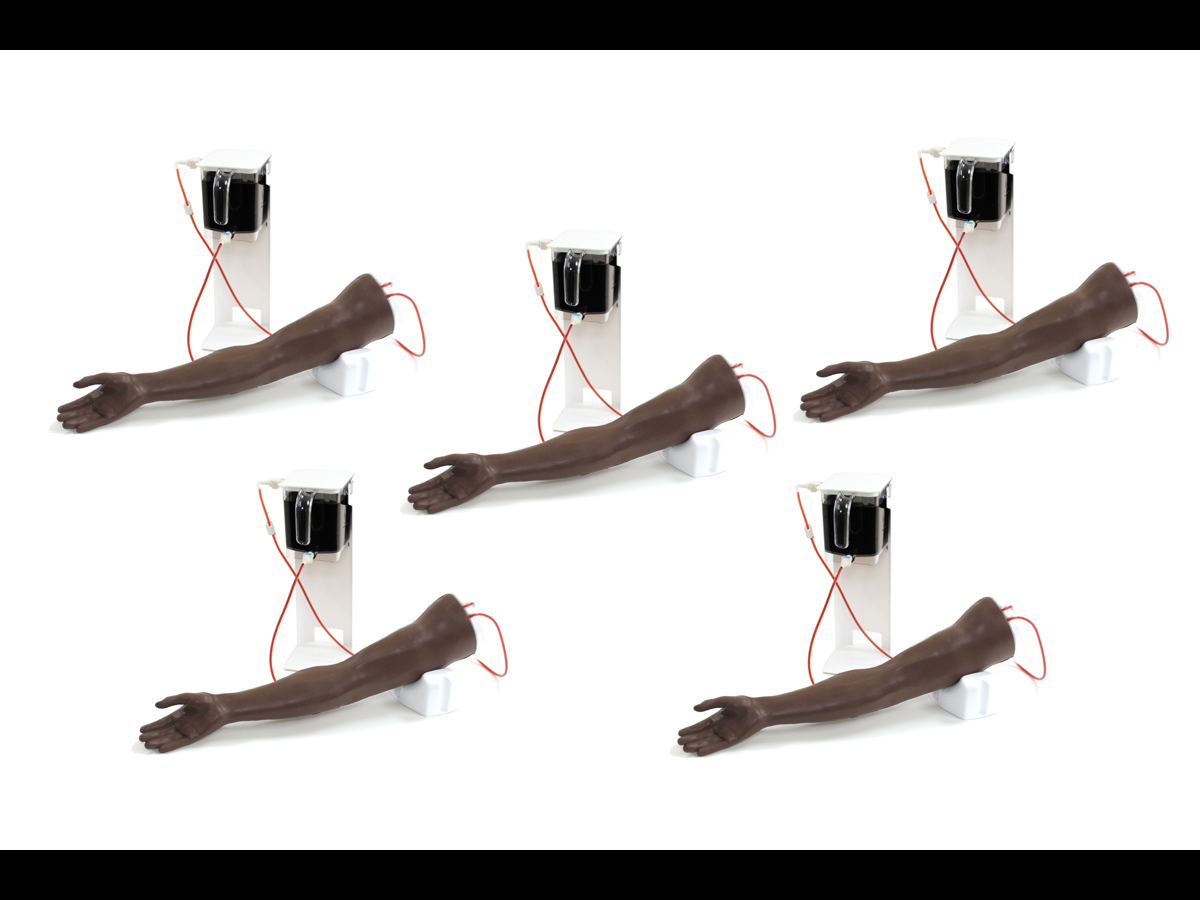
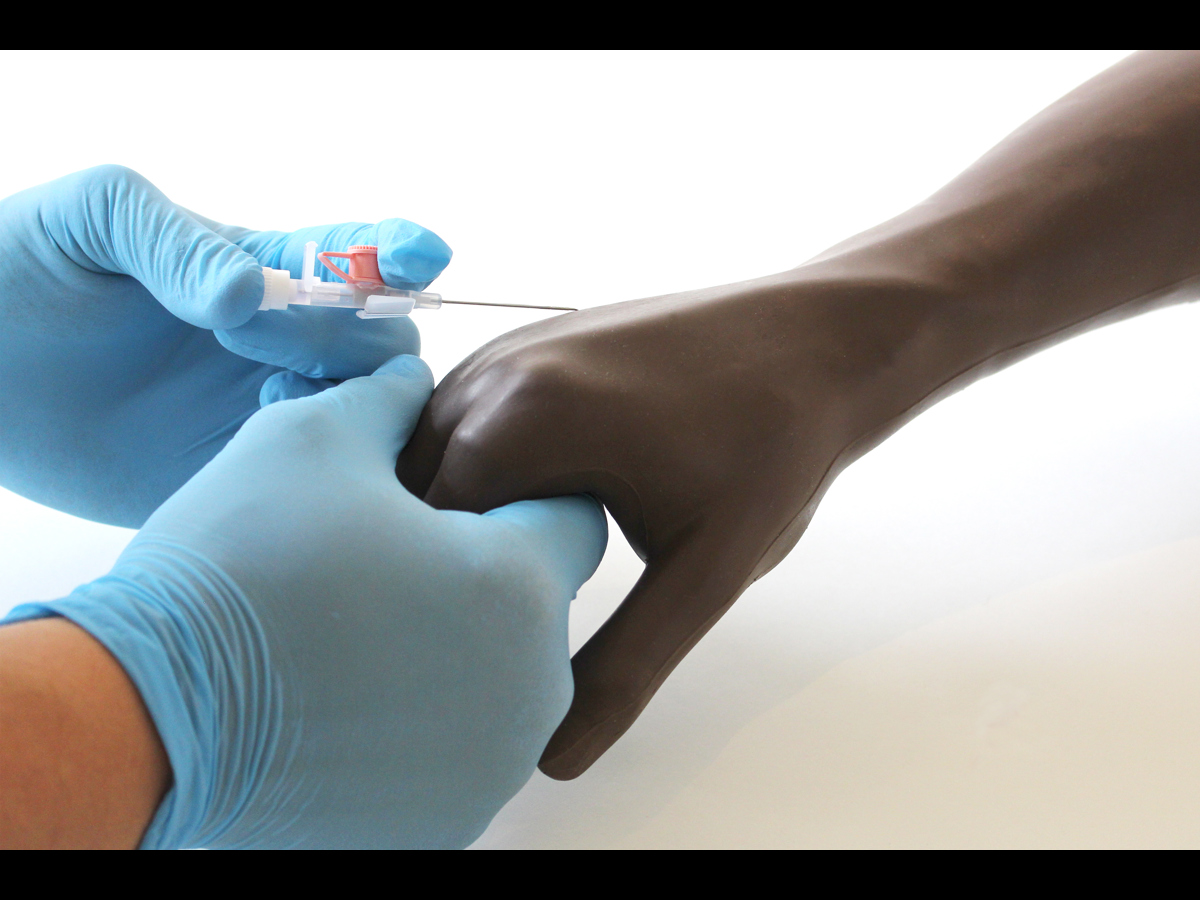

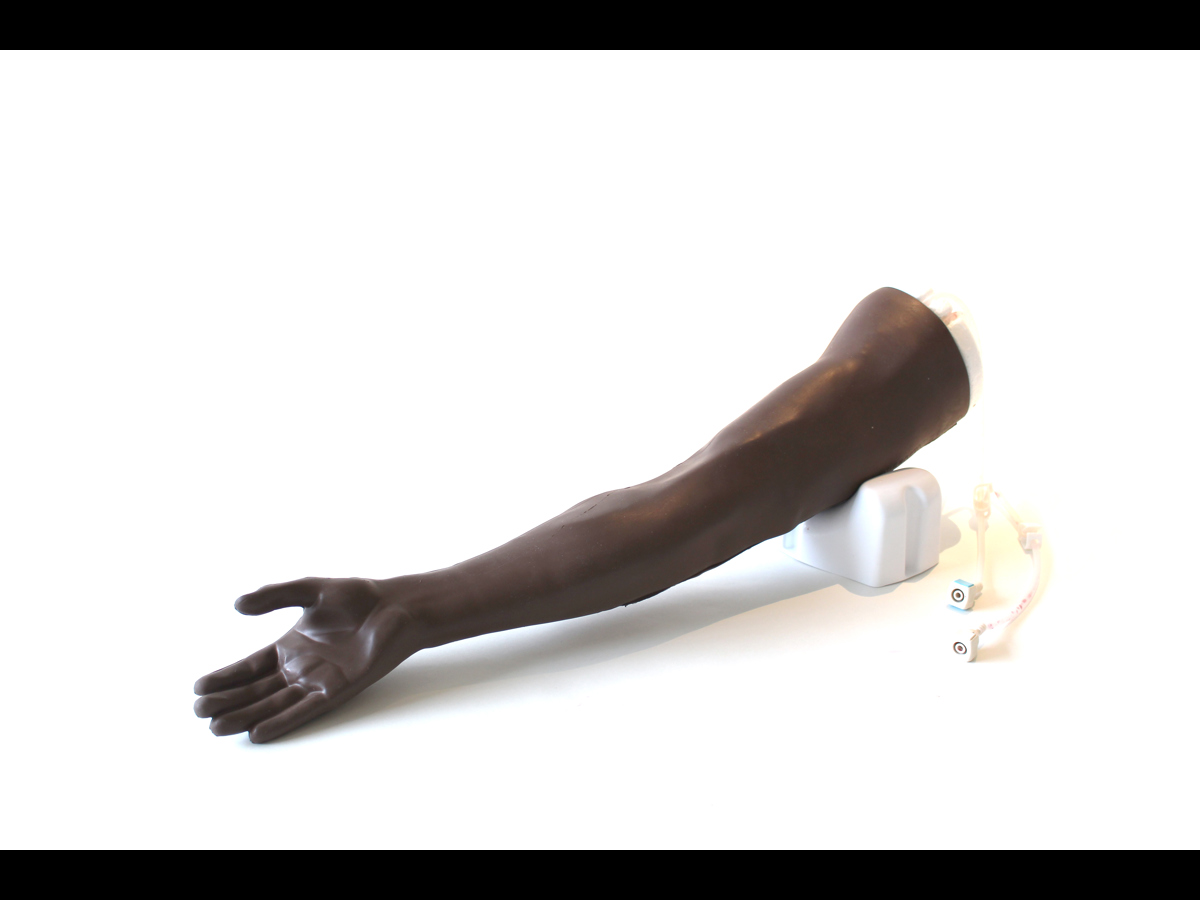
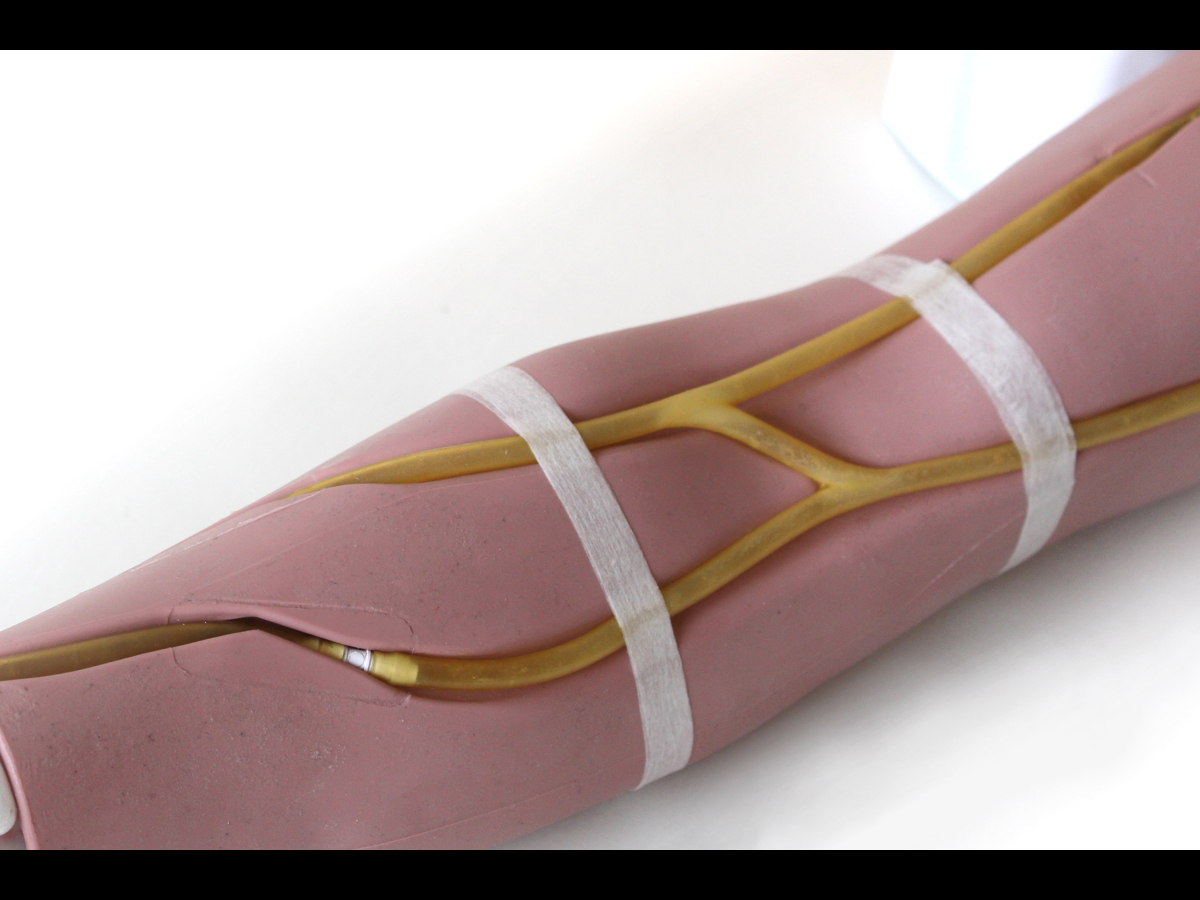
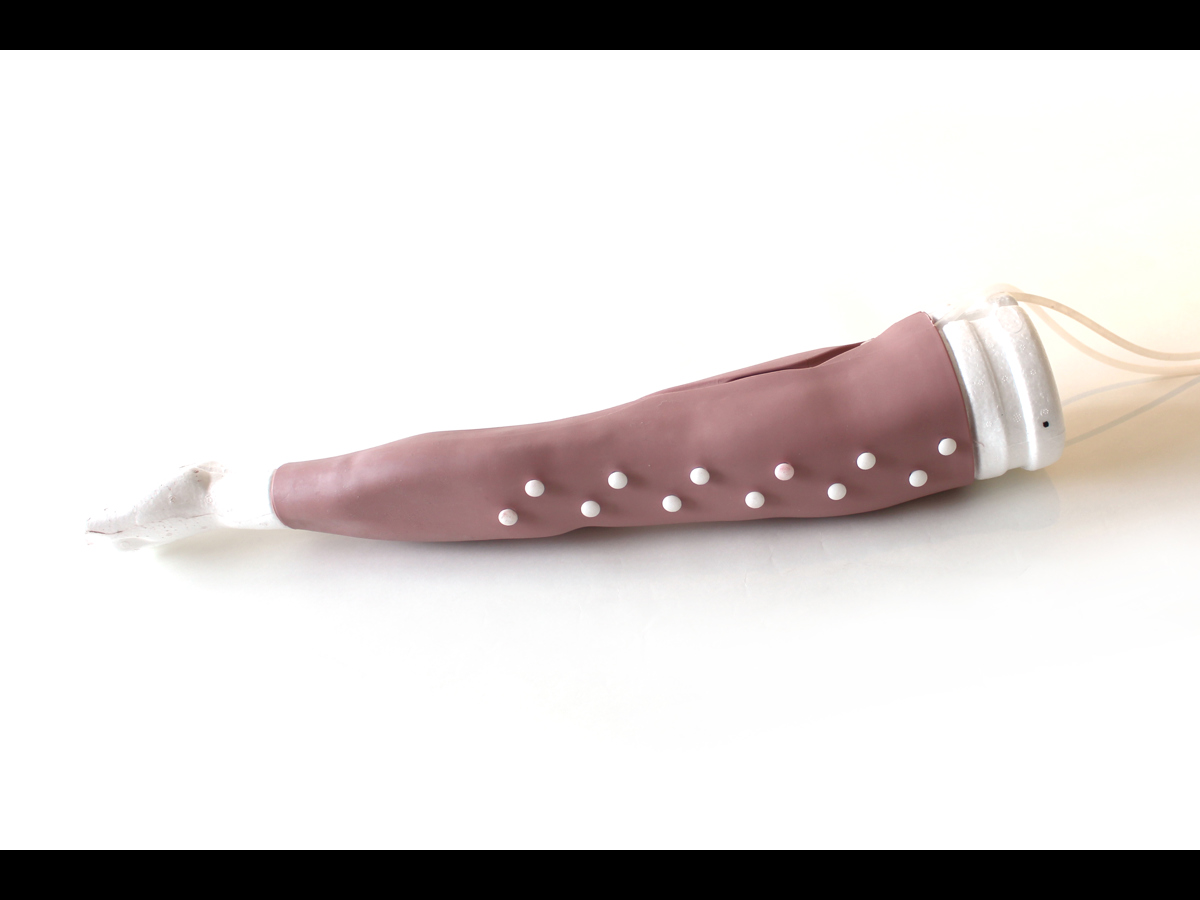
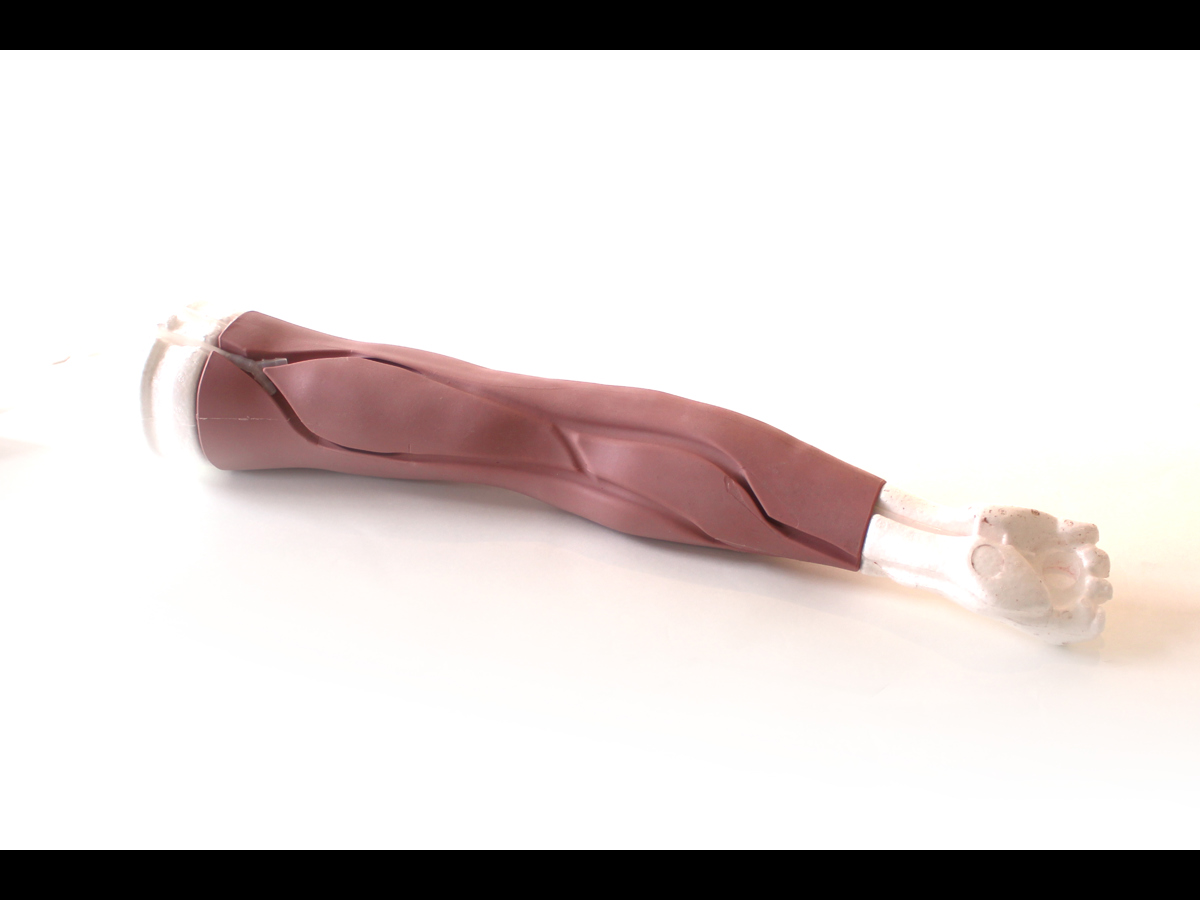
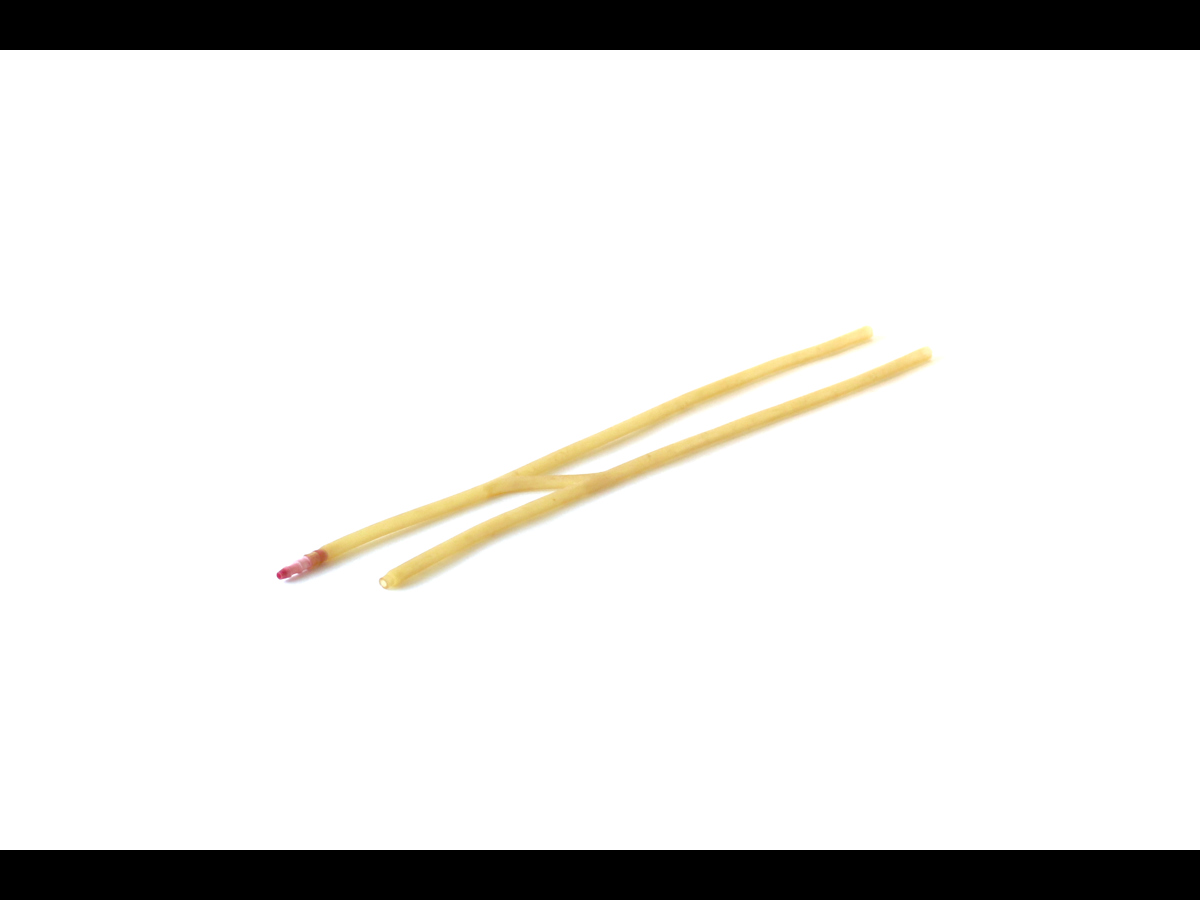
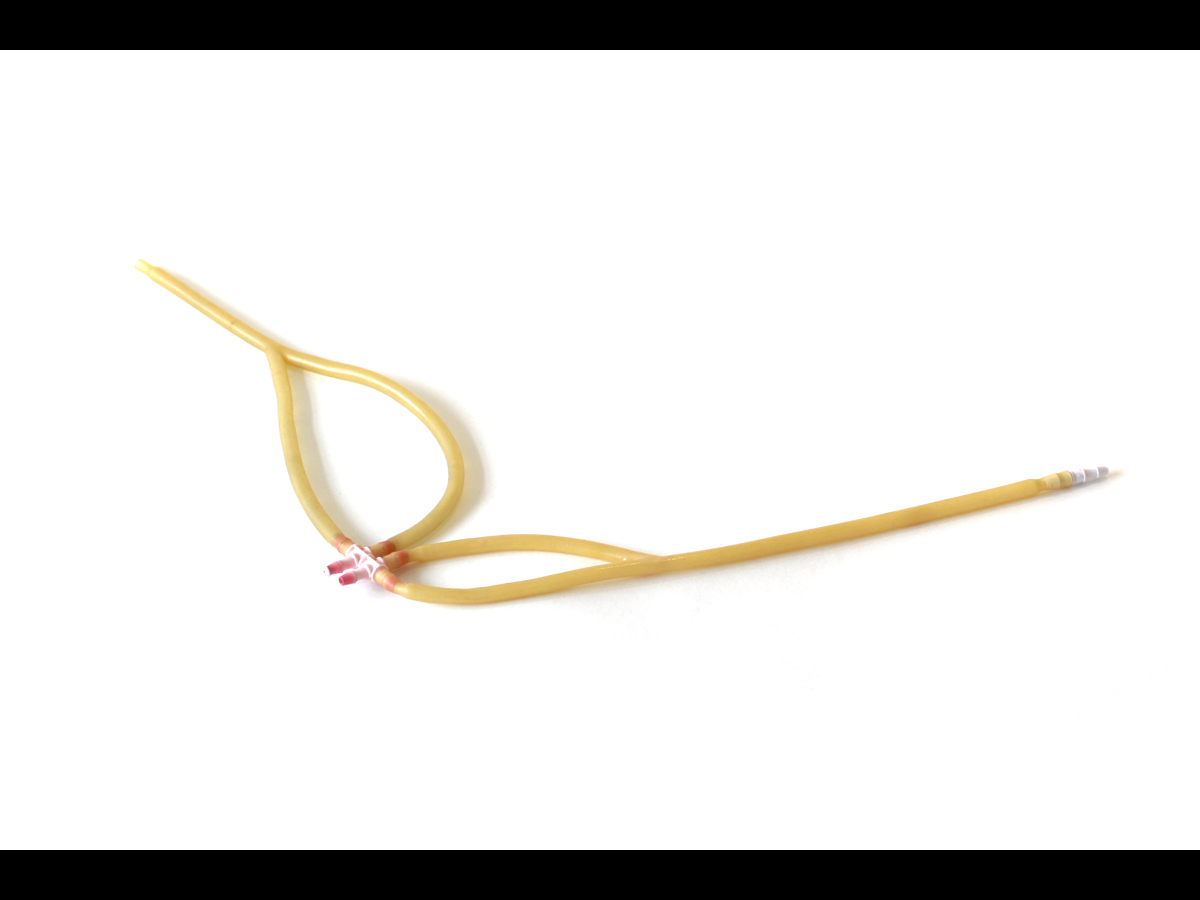
Standard Venipuncture Arm Value Pack (5 x Dark Skin Tone)
Skin Tone
Model
Limbs & Things' Standard Venipuncture Arm is now available in value packs of 5. Alongside 5 Standard Venipuncture Arms, each pack includes an additional 5 replacement arm skins, and 5 replacement ACF veins.
The new and improved Standard Venipuncture Arm is an ideal trainer for basic and advanced learning. Incorporating a unique skin-locking system (patent pending) and modular vein systems to accurately simulate venipuncture, IV cannulation, and IV infusion training.
What are the benefits of these new model Venepuncture arms?
Unique Skin Locking System - ensures the model is easy to re-skin whilst maintaining the lifelike palpability and haptics of the underlying basilic, cephalic, dorsal metacarpal and median cubital veins.
Limbs & Things' Standard Venipuncture Arm is now available in value packs of 5. Alongside 5 Standard Venipuncture Arms, each pack includes an additional 5 replacement arm skins, and 5 replacement ACF veins.
The new and improved Standard Venipuncture Arm is an ideal trainer for basic and advanced learning. Incorporating a unique skin-locking system (patent pending) and modular vein systems to accurately simulate venipuncture, IV cannulation, and IV infusion training.
What are the benefits of these new model Venepuncture arms?
Unique Skin Locking System - ensures the model is easy to re-skin whilst maintaining the lifelike palpability and haptics of the underlying basilic, cephalic, dorsal metacarpal and median cubital veins.
Vein Gripping - new innovative vein gripping mechanism works in conjunction with the new arm skin to further enhance realistic and repeatable training.
Modular Metacarpal & ACF Veins - splitting the basic vein structure into two separate modules allows for better cost efficiency, ease of use, and replacing sections individually will reduce waste.
Gravity System Blood Supply - improvements to stability of the mock blood flow simulator, and extended tubing, allow for greater versatility during simulated patient training exercises.
Overview
- Vein structures are now modular with a separate ACF vein and Metacarpal Vein, allowing for replacement of individual parts
- New and improved skin-locking system (patent pending) improves arm re-skinning after replacing a vein module
- New vein gripping system allows for easy re-fitting and positioning of veins
- Veins are palpable with realistic haptics for accurate clinical use
- Infusion tube allows for intravenous fluids to be administered
- Improved, gravity blood system
Realism
- Arm provides a realistic blood flashback upon insertion of needle
- Improved arm skin offers a more realistic look and feel
- Veins in the metacarpal & ACF modules are palpable
- Realistic representation of the antecubital fossa (SCF) and metacarpal regions
- Gripping systems secures veins in a true-to-life position
Versatility
- Arm is compatible with vacuum blood collection systems, needles & syringe, and IV cannulas
- Extended tubing allows for extra maneuverability in the classroom for use with a simulated patient
Cleaning
- Flush liquid from the vein and fluid system before storing your product
- Clean the skin surface with a damp soft cloth, using warm water and mild detergent
- Allow skin to thoroughly dry before storing
Safety
- Only use Concentrated Venous Blood supplied with the arms, or product numbers 00020 & 00021, other fluids may weaken or damage the venipuncture simulator
- Use water-based lubricant to fit arm skin over the venipuncture arm base
- Veins contain latex, however, these are covered by the silicone arm skin during procedures
Simulated Patient
- Suitable for use with a simulated patient to test communication skills
Anatomy
Sites for peripheral venous cannulation
- Dorsal metacarpal vein in the hand
- Antecubital Fossa (ACF) vein in the arm
Metacarpal Vein Module anatomy
- Basilic vein
- Cephalic vein
- Dorsal metacarpal veins
ACF Vein Module anatomy
- Basilic vein
- Cephalic vein
- Median cubital vein
Skills Gained
- Intravenous Cannulation in dorsal metacarpal and ACF sites
- IV infusion
- Venipuncture
- Practice of aseptic techniques
- Communications skills when using a simulated patient
Product Contains
This pack contains 5 Standard Venipuncture Arm models.
References
AAMC Preclerkship Medical Skills Venipuncture is listed on the foundation list of basic clinical procedures for the preclerkship student. Specific skills identified: • Insert needle at proper angle • Withdraw appropriate amount of blood • Withdraw needle and check for bleeding • Dress area appropriately • Dispose of needle appropriately AAMC Undergraduate Clinical Skills Also listed in Undergraduate skills: Cardiovascular: Venipuncture/Venous cannulation (needle, catheter)
ACGME Emergency Medicine Milestones ACGME recommendations in milestone documents. Examples: Other Diagnostic and Therapeutic Procedures: Vascular Access (PC14) Successfully obtains vascular access in patients of all ages regardless of the clinical situation. Level 1: Performs a Venipuncture, places a peripheral intravenous line, performs and arterial puncture. ACGME Surgery FAQ Defined tasks for PGY-1 residents may be supervised indirectly for the following procedural competencies: a) performance of basic venous access procedures, including establishing intravenous access b) placement and removal of nasogastric tubes and Foley catheters c) arterial puncture for blood gases
MN Phlebotomy Technician Certificate Program Curriculum During the 10-week program, students are required to perform approximately 100 successful phlebotomy collections within the outpatient setting prior to advancing to the inpatient setting. Students then continue with venous collections, though they are also exposed to arterial punctures, collecting specimens from arterial lines and assisting nurses with central line collections. Students must complete approximately 160 total clinical training hours.
US Department of Health and Human Services, IV Fluid therapy in adults in hospital Skilled and competent healthcare professionals should prescribe and administer IV fluids, and assess and monitor patients receiving IV fluids.
National Standard EMT-Paramedic Curriculum EMT-Paramedic: National standard curriculum: Venous Access and Medication Administration
Clinical Skills in the Undergraduate Medical Curriculum 2013, University of Otago Punctures and Aspirations: Venipuncture - for routine blood tests • can independently perform the skill safely and effectively in the clinical setting in Years 4/5/6/TI Peripheral intravenous cannulation • In years 4/5 student should be able to demonstrate performance of the skill but does not indicate or equate to competence at the skill. • Can independently perform in clinical setting in Yr 6/TI
Doctors should be able to provide safe treatment to patients through competently performing certain procedural and/or assessment skills Intravenous Venipuncture Intravenous cannulation
Outcomes for graduates (Tomorrow's Doctors), Appendix 1 - Practical procedures for Graduates, p.12-14: 4. Venipuncture. Inserting a needle into a patient's vein to take a sample of blood for testing, or to give an injection into the vein. 17. Establishing a peripheral intravenous access and setting up an infusion; use of infusion devices. Puncturing a patient's vein in order to insert an indwelling plastic tube (known as a cannula), to allow fluids to be infused into the vein (a drip). Connecting the tube to a source of fluid. Appropriate choice of fluids and their doses. Correct use of electronic devices which drive and regulate the rate of fluid administration.
UK Foundation Programme Curruculum, August 2014, p.50: Table 2. Commonly requested investigations • Venipuncture • IV cannulation • Preparation and administration of IV medication and injections and fluids F1 outcomes • Competently performs and, when sanctioned by a supervisor, teaches medical students in the ... procedures ... either in the workplace or on simulated patients F2 outcomes (in addition to F1) • Maintains and improves skills in the core proced- ures e.g. reliably able to perform venous cannulation in the majority of patients in more challenging circumstances such as during resuscitation • Demonstrates extension of the range of procedures they can perform GMC Outcomes for provisionally registers doctors with a licence to practise (The Trainee Doctor), 2015, p,8: Core clinical and procedural skills ...: Venipuncture, IV cannulation, Prepare and administer IV medications and injections...Intravenous infusion including the prescription of fluids, Intravenous infusion of blood and blood products
Specialty Training Curriculum for Core Medical Training, August 2013, p.165: The CMT STR is expected to be competent, and maintain competency, in the following practical procedures in the Foundation curriculum during Core Medical Training: … Venipuncture
THE ROYAL COLLEGE OF EMERGENCY MEDICINE Curriculum and Assessment Systems For Training in Emergency Medicine 2015 (Revised 2016): CMP4 Septic Patient … takes blood cultures and administers … intra-venous fluids in accordance with 6 hr sepsis bundle ICM Competency: Demonstrates aseptic peripheral venous cannulation • Demonstrate the ability to establish peripheral venous cannulation using an appropriate technique, demonstrating effective infection control measures and proper regard for patient safety and well being
NHS National Practitioner Program: Matrix Specification for the Physician Associate (2016). p.127: Core Procedural Skills: Venipuncture; IV cannulation; Arterial Blood Gas Sampling
RCN Standards for Infusion Therapy: Nursing involvement ranges from caring for an individual with a peripheral cannula in situ, to … Infusion nursing is not limited just to the care of the patient and the device. Increasingly nurses are responsible for the insertion and removal of the device Veins that should be considered for peripheral cannulation are those found on the dorsal and ventral surfaces of the upper extremities including the metacarpal, cephalic and basilic p 26 p35 Vascular Access Device Removal The removal of any vascular access device must only be undertaken by an appropriately trained practitioner. Those commonly removed by nurses include cannulas, 8.11 Blood Sampling p.58 Blood sampling (Venipuncture, blood cultures, capillary blood sampling or via vascular access devices) should be performed on request of a clinician and/or health care professional or according to established protocols, using aseptic technique and observing standard precautions. NMC Future nurse: Standards of proficiency for registered nurses, 17 May 2018, p.32: 2.2 undertake Venipuncture and cannulation and blood sampling, interpreting normal and common abnormal blood profiles and venous blood gases
The Cavendish Review - An Independent Review into Healthcare Assistants and Support Workers in the NHS and social care settings - July 2013, p18 Advanced tasks 3.7.1. Partly as a consequence of nurses spending increasing time on organisational tasks, some HCAs are now doing a wide range of more advanced tasks traditionally undertaken by registered nurses. These include … cannulation (the insertion of an IV drip or tracheotomy tube)…. setting up infusion feeds … taking blood samples…
Direct gov careers website says: Training and development: You will usually receive on-the-job training, which can take up to six months and include: … • methods of blood collection and labelling • choosing appropriate sites for taking blood samples (Venipuncture) … UCL 1 day phlebotomy course This course is designed for any healthcare professional or research scientist who is required to take blood from patients in a clinical or research environment. We also accept members of the public who are planning to pursue a career as a hospital phlebotomist: “Participants will practise on simulation arms – never more than 2 participants per arm. After practising the skill on a manikin you will have the opportunity to take blood from a fellow participant providing they give consent. By the end of this session, candidates will be able to: Demonstrate appropriate infection control principles when performing phlebotomy. Use both the butterfly system and the vacutainer system to collect a blood sample. List the potential complications during and after taking blood. Take blood from a real person under supervision. You will NOT receive a certificate of COMPETENCE; only of Attendance. You cannot claim that you are competent in phlebotomy after only one successful attempt on a real person. Competence will be deemed by future employers and can vary between institutions.”

